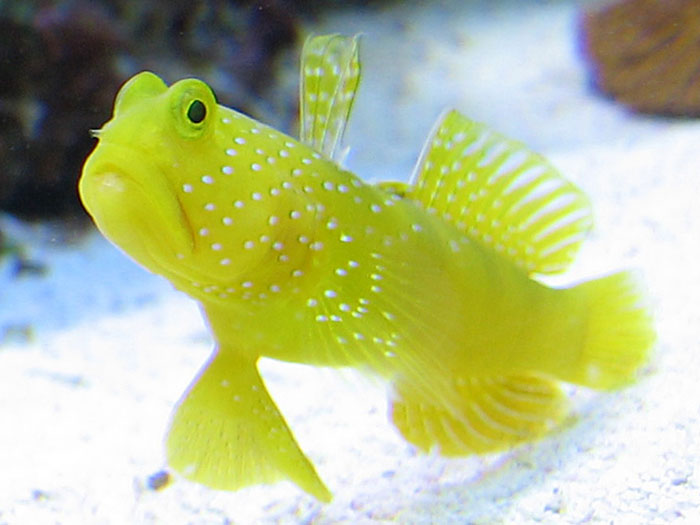Gobies
(Gobiidae)
Gobies are fishes of the family Gobiidae, one of the largest fish families comprising more than 2,000 species in more than 200genera. The most distinctive aspects of goby morphology are the fused pelvic fins that form a disc-shaped sucker. This sucker is functionally analogous to the dorsal fin sucker possessed by the remoras or the pelvic fin sucker of the lumpsuckers, but is anatomically distinct; these similarities are the product of convergent evolution. Gobies can often be seen using the sucker to adhere to rocks and corals, and in aquariums they will stick to glass walls of the tank, as well. Info from http://en.wikipedia.org/wiki/Goby Pic by www.reefs2go.com

